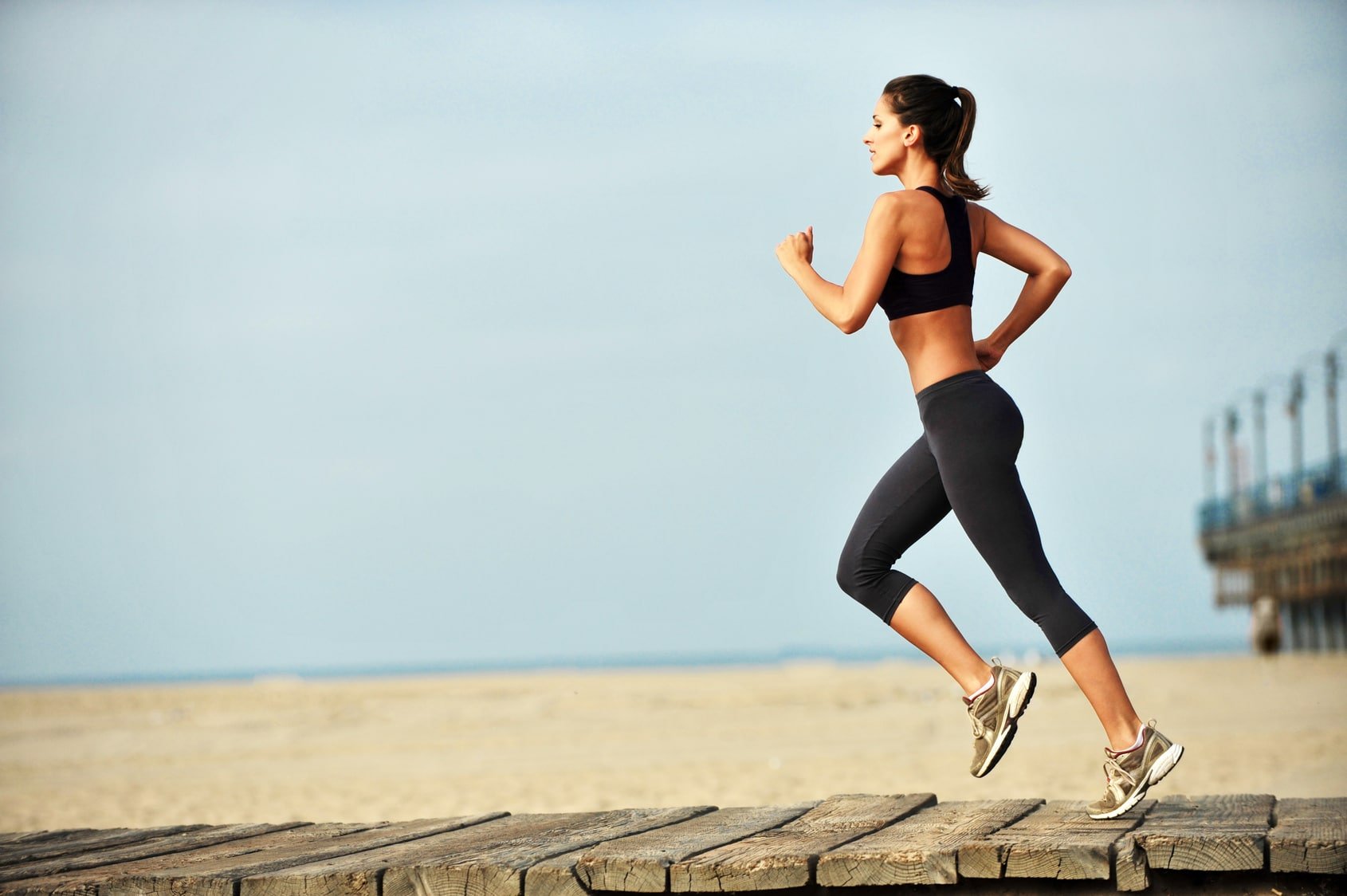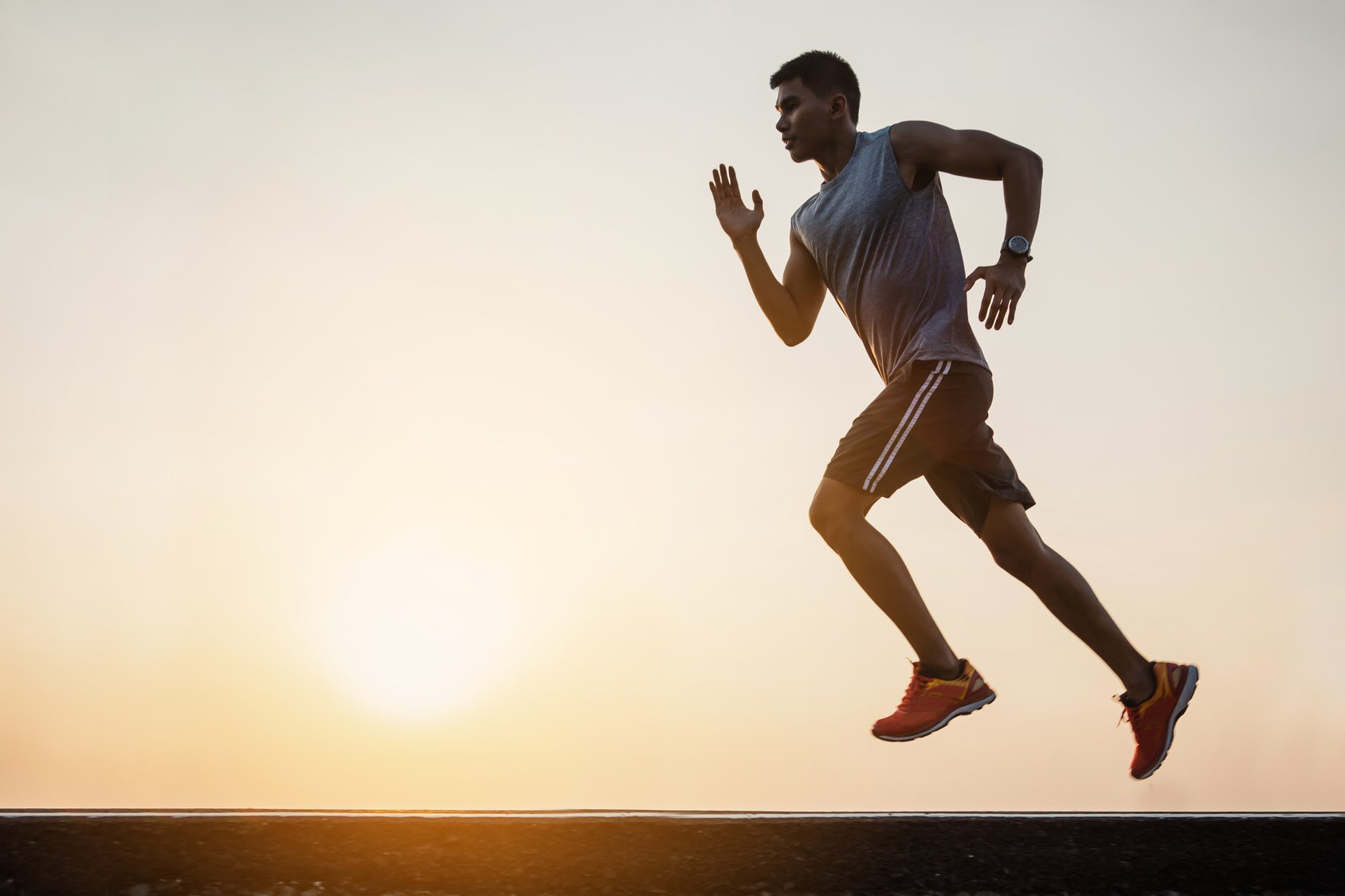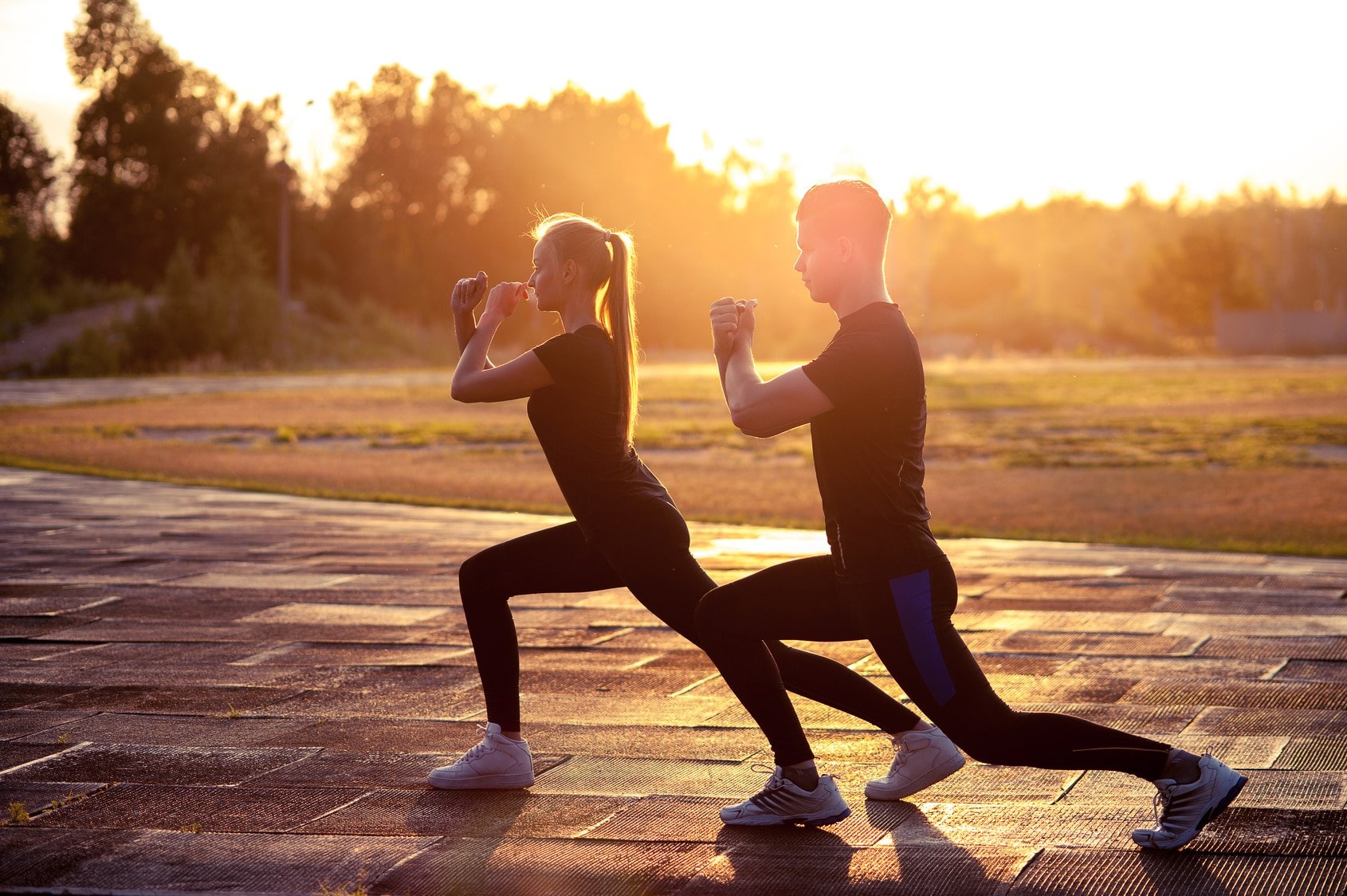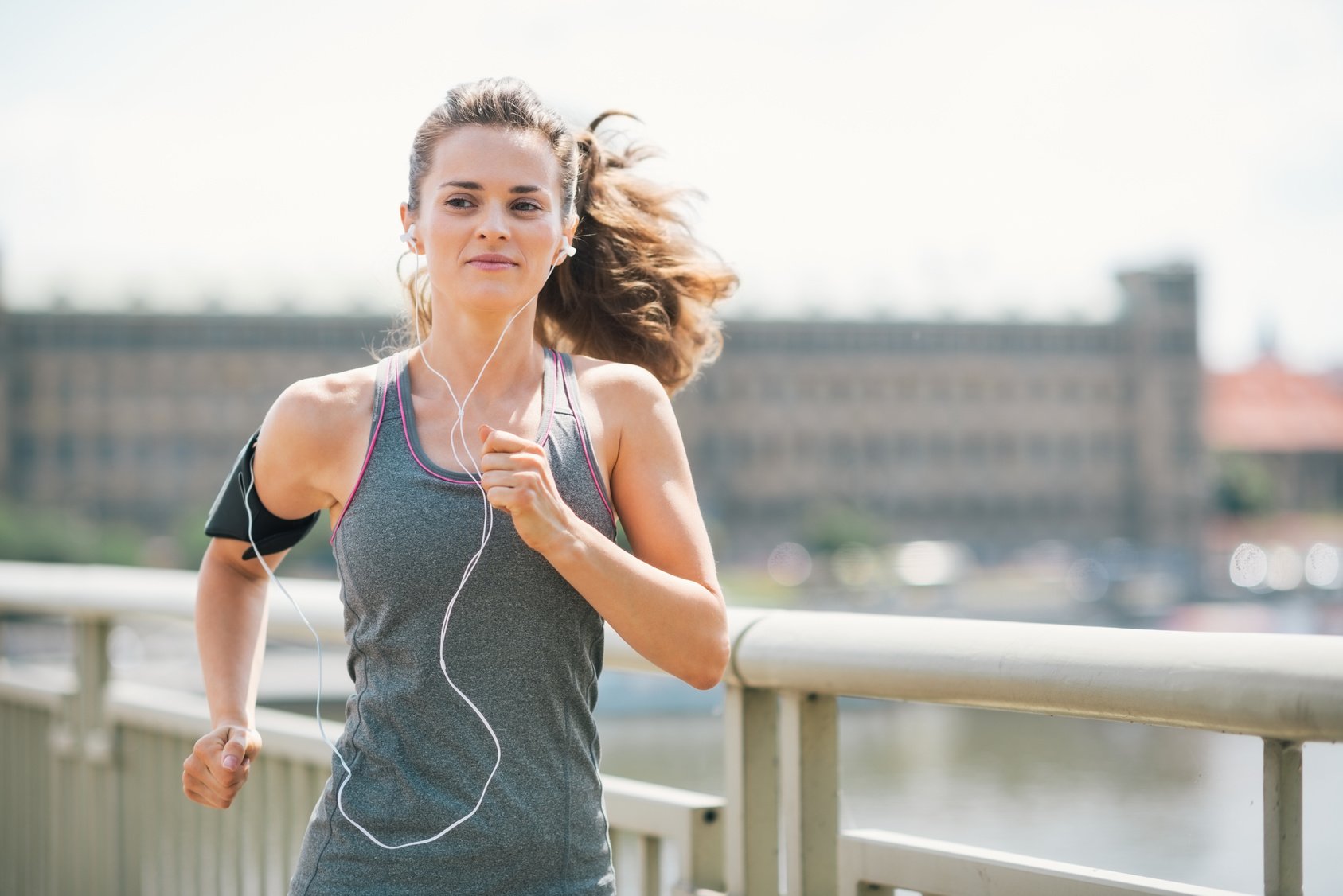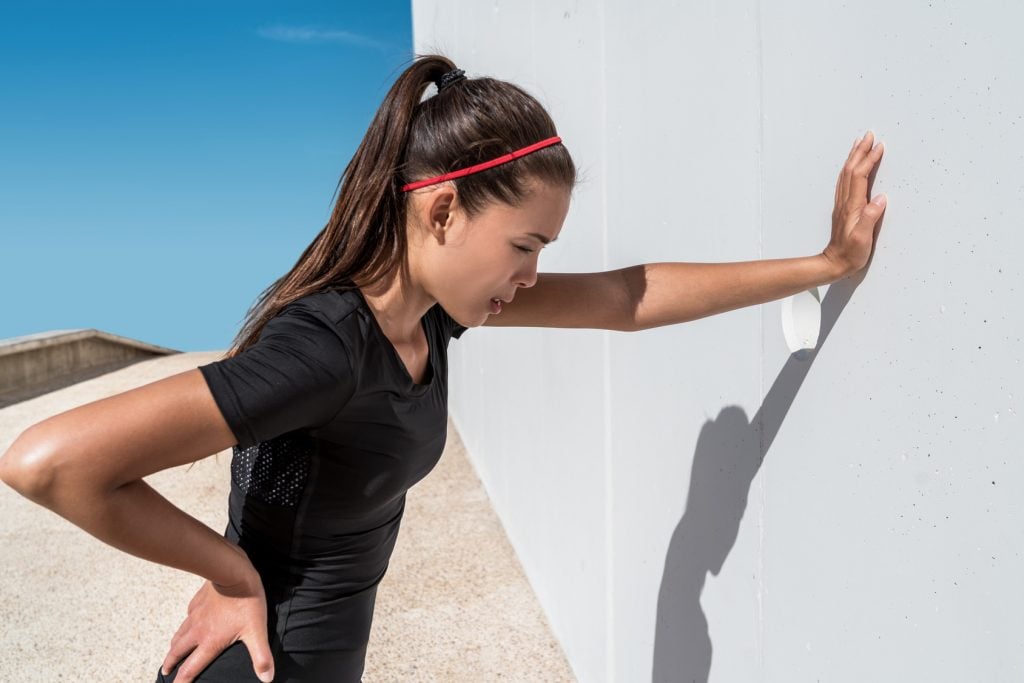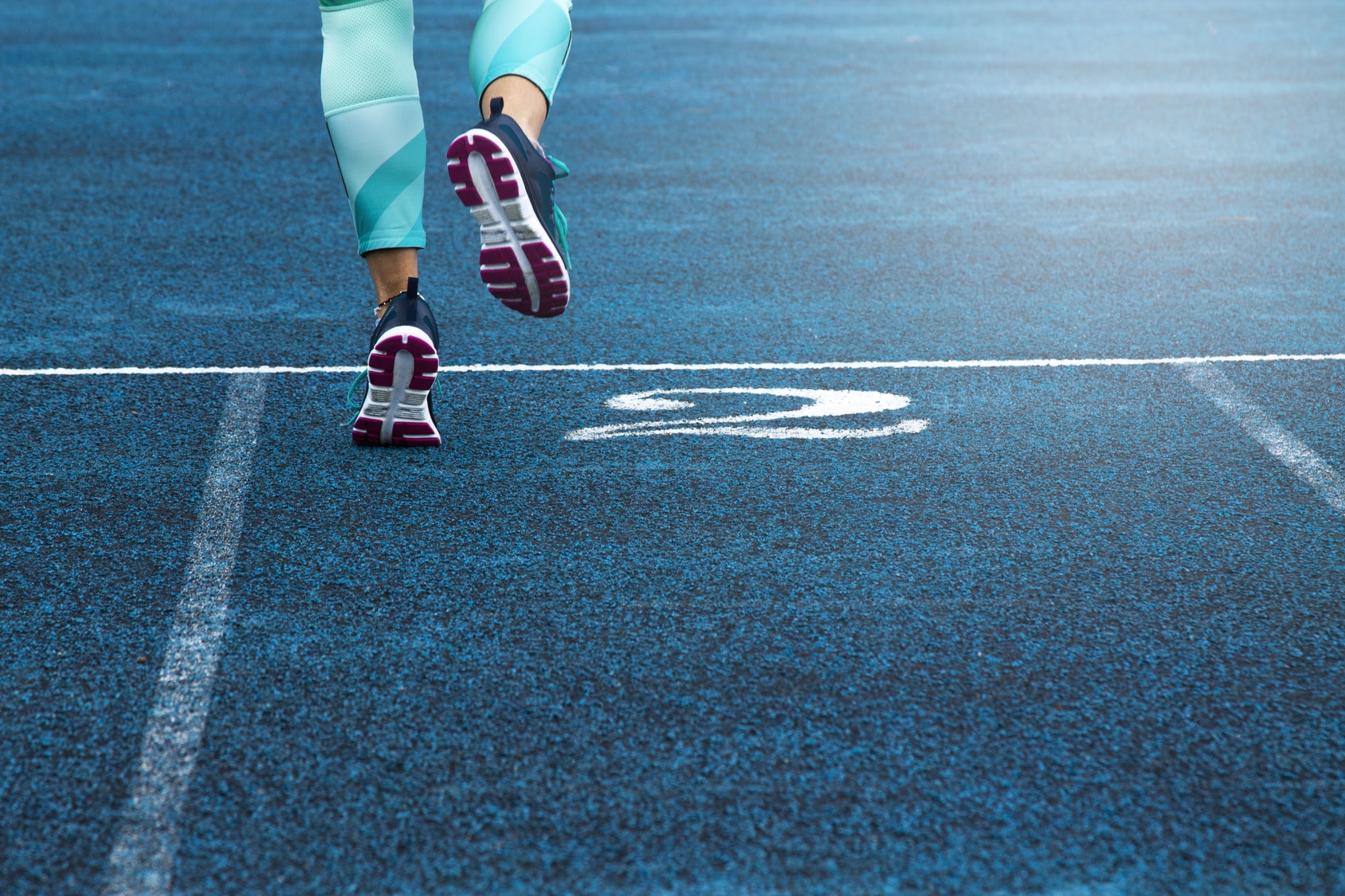Why Strength Training at Home Can Straight-Up Save Your Running
Look, I get it — when life gets crazy, the first thing most runners ditch is strength work.
And then… bam! Your hips are tight, your knees start barking, and suddenly your “easy 5-miler” feels like a death march.
I’ve coached runners through this mess more times than I can count. One guy I worked with was stuck at 20 miles a week and always limping around with shin splints and cranky Achilles.
We added two simple bodyweight strength sessions per week. A few months later? Dude was clocking 40 miles per week, injury-free.
Didn’t change his shoes. Didn’t add cryo chambers or fancy massage guns. He just got stronger.
And this isn’t just me yapping — science backs it up. A massive review found that strength training can slash your risk of sports injuries by two-thirds and nearly cut overuse injuries in half.
That’s not some gimmick. That’s data.
And the best part? You don’t need a gym. You don’t need fancy crap. Just your body, your floor, and a little sweat equity.
Yeah, bodyweight training works — when you do it right.
I’m not talking about endless burpees till your lungs explode. I mean real, functional moves that target the stuff that matters for runners:
- Strong glutes to power those hills.
- A solid core to stop you from folding at mile 20.
- Joints tough enough to take the pounding.
I’ll be real with you — there was a stretch when I couldn’t hit the gym for weeks. Thought I’d be fine.
Spoiler: I wasn’t. My form fell apart, knees started whining, and my runs got ugly fast.
I learned the hard way that you don’t always need barbells — but you do need strength.
That’s why I put together this no-equipment workout. I give it to every runner who tells me, “But I don’t have time for the gym.”
No excuses. You can do this anywhere.
You’ll build the kind of strength that shows up when it counts — on the roads, on the trails, when your legs are toast and your brain’s telling you to quit.
And hey — you’re not alone trying to juggle running with work, kids, life. Tons of runners are crushing it with short, at-home sessions.
I saw one runner in a forum say, “I prefer a 20-minute HIIT session at home — done in under half an hour, no commute, no drama.”
Respect. That’s how you make training fit your life, not the other way around.
Bottom line: Home strength training works.
It makes you stronger, faster, and less likely to hobble off the couch holding your IT band.
Let’s get into the mindset first — then I’ll show you the 9-move circuit that gets the job done.
The Strength Mindset for Runners (Home Edition)
Okay, listen up: runners don’t need to train like bodybuilders.
You’re not here to flex at the beach. You’re here to build a body that can take the hits — mile after mile — without falling apart.
That means strong joints, stable hips, powerful glutes, a rock-solid core, and good movement patterns that don’t break down under pressure.
Like one coach said: “For runners, strength training is about bones, joints, tendons — not just muscles.”
Couldn’t agree more.
You’re not chasing bigger quads. You’re chasing durability.
Here’s the deal: when your muscles fire right, and your body stays aligned, you’re not just running better — you’re running safer.
That’s what strength training does. It dials in your neuromuscular system so you move smoother, with fewer energy leaks.
That slouchy, knees-caving-in form at mile 10? That’s what we’re fixing.
And yep, bodyweight training can absolutely get you there.
You don’t need dumbbells to start — especially if you’re new to strength work or coming back from injury.
Bodyweight is where it’s at.
One coach on Reddit put it best: “If you’re not doing any strength work yet, just doing bodyweight stuff at home can seriously level up your running.”
Later, sure, add bands or weights if you want. But don’t wait for “perfect.” Start with what you’ve got.
Also, don’t sleep on plyometrics — those jumpy, explosive moves. They can really improve your running economy (read: you move faster with less effort).
A few well-placed jump squats or lunge jumps? Game-changers.
How to Work This Into Your Week
Here’s my rule: 2 to 3 sessions a week. That’s it.
Even 20–30 minutes can move the needle. Hit strength right after easy runs or on cross-training days.
Keep hard days hard. Keep rest days sacred. And don’t go crushing leg day before your long run. Common sense, right?
If you’re ramping up mileage or in peak training, you can dial it back to once or twice a week.
But in the offseason? Push that strength work. That’s your time to build.
Oh, and don’t skip the warm-up.
You’d never go straight into a tempo run without loosening up (at least, I hope not), so give your strength sessions the same respect.
A few minutes of leg swings, lunges, ankle hops — it gets the blood moving and keeps you from jacking something up.
And please — quality over quantity.
Ten clean reps will help you more than 30 sloppy ones that mess up your movement patterns.
I’ve seen runners do strength work with garbage form, and then wonder why their knees still hurt. That stuff carries into your run form, so dial it in.
Be Flexible. Be Real.
Some days you’ll have 30 minutes. Other days, you’ll have 8. That’s life. Do what you can.
One coach told me, “Something is better than nothing.” Preach.
Break it up into short chunks if needed. Do core in the morning. Hit glutes at night. It adds up.
Micro workouts might actually be easier to stick with, too. Less fatigue. More flexibility. And hey — your knees and hips will thank you.
Let me give you a real-world example:
A marathoner named Mindy was benched with IT band syndrome for 7 months. She tried everything. Nothing worked.
Then she ditched the machines, started doing solid strength work — think deadlifts, squats, real movement.
Seven weeks later, she was back on the roads. Later that year? Boston qualifier.
Her words: “Without strength training, I couldn’t have done it.”
Now, I’m not saying you need to go deadlift 300 pounds.
But the point stands: strength work changes the game. For injury prevention, for performance, for confidence.
It’s not optional. It’s part of the plan. Own it.
Ready? Let’s Get Into the 9-Move, No-Equipment Circuit That’ll Toughen You Up
Listen up — I don’t care if you’re chasing a new 5K PR or just trying to keep your knees from screaming on the downhills, strength work matters.
And no, you don’t need a gym membership or fancy gear. Just your body, a little floor space, and the will to get stronger.
Here’s a no-BS circuit I swear by.
It’s 9 exercises, done in a smart order to hit every major muscle runners need — quads, glutes, hamstrings, calves, core, back — and yeah, we’re throwing in some plyo to keep your stride snappy.
This isn’t some random YouTube list. Each move’s got a job to do.
We’re talking stability, power, injury-proofing, and building that tough runner body that can handle miles without falling apart.
How to Do It
- Do each move for the reps or time listed.
- Rest 30–60 seconds between each one. Take a sip of water. Shake out your legs.
- After all 9? That’s 1 round. Shoot for 2–3 total, resting 1–2 minutes between rounds.
New to this? Start with 1 or 2 circuits, shorten the reps if needed, and focus on form. This isn’t about showing off — this is about getting stronger where it counts.
Do this thing 2–3 times a week on non-running days. Or tag it onto an easy run.
Example: Jog 3 miles, then hit this. Or knock it out on a cross-training Monday.
Warm-up included, you’re looking at 30–45 minutes. That’s all it takes.
1. Bodyweight Squats
Why it matters: Squats are the meat and potatoes of runner strength. They hit your quads, glutes, and hamstrings — the engines that drive your stride.
They also clean up your form by locking in that hip-knee-ankle alignment.
Janet Hamilton, an exercise physiologist, backs this up — she says squats help fix imbalances, increase range of motion, and reduce injury risk. That means fewer knee issues, better posture, and a smoother ride all around.
Ever felt your legs go dead on a hill or in the last mile of a race? Squats build the muscle endurance to power through that wall.
How to Do It
- Feet shoulder-width apart, toes forward or slightly out.
- Stick your butt back like you’re sitting in a chair.
- Drop down until your thighs are at least parallel to the floor. Keep your chest proud, back flat, and knees tracking over your feet.
- Push through your heels and stand tall.
Pro tip: Think “drive the floor away” with your heels. It fires those glutes right up.
Do: 3 sets of 15–25 reps.
Coach’s Corner: Control the movement — 2 seconds down, 1 second up.
No bouncing. No folding forward like a lawn chair.
If this gets too easy (and it will), grab a backpack, throw a dumbbell in it, or progress to single-leg squats.
One PhD-level Redditor even pointed out that unweighted, full-range squats beat the heck out of machines for functional strength.
Bottom line: Master these. They build the foundation for every strong stride you take.
2. Walking Lunges
Why it matters: If squats are the meat, lunges are the seasoning.
This move mimics the running stride — basically a slow-motion, muscle-building version of what you do with every step.
Lunges hit glutes, quads, hammies, calves, and your core too. Plus, they iron out left-right imbalances that running tends to exaggerate.
A lot of coaches say lunges are “running in disguise” — and they’re right.
You’re learning to balance, stabilize, and push off strong from one leg at a time. Exactly what your body needs to handle hills, sprints, and long runs without breaking down.
How to Do It
- Stand tall. Step forward with your right leg.
- Drop down into a 90-degree bend in both knees. Don’t let the front knee go past your toes.
- Keep your chest up and your core tight.
- Push through your right heel to bring your left leg forward. Now lunge with the left.
- Keep alternating.
Do: 3 sets of 12–16 lunges per leg (24–32 total).
Coach’s Corner: Watch that front knee — don’t let it cave in or shoot forward like a rocket. Keep the weight in your heel.
Feel that front-leg glute working? That’s what drives your stride forward.
If walking lunges feel sketchy balance-wise, do stationary split squats till you’ve got it locked in.
Oh, and wobbly legs at first? Totally normal. That’s your stabilizer muscles learning to work. Stick with it and you’ll feel the difference in your running form — especially when you’re grinding out the last mile of a tough run.
3. Single-Leg Lateral Hops
Why it matters: Running’s mostly forward, but life throws curveballs. Uneven trails. Curbs. Potholes. That awkward sidestep to dodge a stroller.
This move trains your body to handle those surprises. It builds side-to-side strength in your ankles, knees, and hips.
And it’s not just me saying this — sports rehab pros use these hops to rebuild dynamic ankle and knee stability after injuries.
So why wait for a sprain? Train that control now.
It’s also a plyo move, which means you’re building explosive strength and elasticity — key for improving running economy. Translation: less effort, more speed.
How to Do It
- Picture a line on the ground. Stand on your right foot on one side of it.
- Slight bend in the knee, core engaged.
- Hop sideways to the left side, land softly on that same foot.
- Regain balance, then hop back.
Do: 3 sets of 12–16 hops each leg.
Don’t overthink distance. Even a hop of 1–2 feet works. Just stay balanced and land soft.
Coach’s Corner: This one isn’t about looking pretty. You might wobble. You might flail. That’s the point.
Your body’s learning to react and stabilize in real time. Use your arms naturally to help balance.
Trail runners, this is gold for you. But even road runners benefit — think of the control you need when your form starts breaking down late in a race.
These hops build that next-level durability.
Lateral Hops
Why it works: Let’s talk ankle insurance. Yeah, that’s what I call lateral hops.
These little side-to-side jumps might look simple, but they train your ankles, knees, and brain to stay sharp — especially when running trails or dodging curbs.
You’re teaching your joints how to handle that “oh crap” sideways step when your foot hits a rock or an uneven patch of road.
Start easy. If single-leg hops make you feel like Bambi on ice, back it up and start with two-legged ones. Or heck, just balance on one foot and gently shift your weight side to side.
It all counts. The point is to wake up those stabilizers and sharpen your reflexes.
Here’s the key: land soft on the ball of your foot, and let your knees and ankles bend naturally — don’t lock up.
That bounce teaches your body how to absorb impact when things go sideways (literally).
And whatever you do, don’t let your knee cave in. Keep it stacked over your foot. Control matters way more than how far you hop.
One PT I know always tells his athletes: “Stick the landing like a gymnast. That’s what keeps you in the game.”
Over time, you can ramp up the distance or make it more reactive (faster side-to-side). It’s all about building that body awareness and ankle trust.
Real talk: I messed up my ankle bad on a trail last year — classic rock-roll situation. It was swollen and angry.
Once I could walk without wincing, I started doing lateral hops. At first, I could barely keep my balance. But a couple weeks in? I was hopping side to side with purpose.
When I hit the trails again, that ankle felt bulletproof. It knew how to react.
That’s what this drill gives you: confidence in your footing.
Coaching Tips:
- Start small — quick, short hops. Nail the form first.
- Land soft, knees bent, core tight.
- Don’t chase distance — chase clean landings.
- Use this drill as ankle insurance — especially if you’ve had a sprain before.
- PTs often require lateral hops pain-free before letting runners back post-ankle injury. There’s a reason for that.
Your turn: Ever twisted an ankle on a run? What’s your go-to rehab drill? Drop it in the comments — I wanna hear what worked for you.
4. Burpees
Why it works: Ah yes… the burpee. The love-hate legend. Most folks groan at the word — but if you’re a runner trying to build real toughness, this is your friend.
Burpees are like the Swiss Army knife of bodyweight exercises. You’re getting a plank, a push-up, a squat, and a jump — all in one brutal little package.
They’ll hit your legs, chest, arms, core, lungs, and brain. You’ll be gassed, but stronger for it.
And get this: a 185-pound person doing 20 burpees per minute torches around 15 calories a minute. That’s more than running at a 7-minute mile pace. No treadmill required.
For runners, burpees mimic the grind of a hard finish — legs on fire, lungs screaming, but still needing to push.
They also build the kind of explosive strength that helps with sprint finishes and those nasty late-race hills.
How to Do It
- Stand tall, feet shoulder-width.
- Drop into a squat, hands on the floor.
- Kick both feet back — plank position.
- Do a push-up (or drop to knees if needed).
- Jump your feet back in — land outside your hands if you can.
- Stand and explode up with a jump, arms overhead.
- Land soft, right back into your squat.
That’s one rep. Aim for 10–20 reps per set, 2–3 sets.
Adjust as needed — omit the push-up or jump if you’re just starting.
Coaching Tips:
- Stay smooth — burpees should flow.
- Keep your core tight — don’t sag in the plank.
- Use your arms in the jump — they’ll help get you off the ground.
- If your form starts falling apart, pause, reset, and finish strong.
Want to finish a workout like a beast? Add a set of burpees.
Your legs will hate you… and then thank you.
Pro Tip: Don’t go zero to hero. Start with just 5 burpees after a run. Build up to 20 over a few weeks.
They sneak up on you. But once you get the rhythm down? You’ll be turning into a conditioning machine.
Your move: What’s the most burpees you’ve ever done in a row? Think you could hit 30? Try it out — and tell me how it goes.
5. Plank Variations (Front & Side)
Why it works: Let’s be real — your core is your engine room.
It’s what keeps you tall when your legs are dying. It keeps your stride smooth, your form clean, and your hips from collapsing.
Planks are the real MVP for runners. No fancy movement. Just hold steady.
Front planks hit your whole midsection — abs, lower back, hips. Side planks go after your obliques and those small-but-mighty stabilizers like the QL (quadratus lumborum) that keep your pelvis level.
Unlike crunches (which are mostly a six-pack show), planks teach your core how to brace — just like you do when running.
You’re resisting movement, not creating it. That’s pure running gold.
Jason Fitzgerald of Strength Running says it best: Plank variations help you run more efficiently and avoid those common overuse injuries.
Think of them as your guardrails. They keep everything stable when you’re logging those long miles.
How to Do It
Front Plank: Forearms on the ground, elbows under shoulders. Straight line from head to heels. Feet hip-width. Abs tight, glutes on. Don’t sag or pike. Breathe deep.
– Aim for 60–90 seconds per set (start with 20–30 sec if needed).
Side Plank: Lie on one side, prop up on your forearm. Stack your feet, lift your hips. Straight line, shoulder to feet. Arm on hip or up in the air.
– Go for 30–60 seconds per side.
Coaching Tips:
- Form first. Shaky backs or dropped hips? Reset.
- Planks aren’t about holding forever. Once you hit 90 seconds, add variety instead.
- Breathe. If you’re holding your breath, you’re doing it wrong.
- Side planks are especially key for runners — running is one-legged at a time, and side planks train that lateral stability.
- Add spice: lift one leg, tap shoulders, or try stir-the-pot on a stability ball if you want to feel your abs scream.
6. Russian Twists
Why it works: Alright, let’s talk Russian Twists.
If you’re serious about running stronger — not just faster, but smoother and more efficient — then your core better be doing more than just looking good in the mirror.
Russian twists hit those side muscles — your obliques — that help control rotation.
When you run, your body naturally twists a bit: left shoulder comes forward, right leg swings through.
That counter-rotation? It’s how your body balances and drives power. But if your core is weak? That twist becomes sloppy. Wasted energy. Poor form. Potential injury.
Russian twists train your obliques to lock that movement in, so you’re not flailing around like an inflatable tube guy.
Runner’s World nailed it when they said this move builds “core strength and power necessary to improve running speed and efficiency.”
Why? Because the twist mimics that natural cross-body motion in running.
I’ve coached runners who went from chaotic, wobbly torsos to looking like machines on the track — all thanks to dialing in their rotational strength.
Bonus: strong obliques also help steady your spine and hips, which means better arm swing, better foot strike, better everything.
How to Do It
- Sit your butt on the floor. Knees bent. Feet either planted or, if you want to feel the burn, hover them an inch or two off the ground.
- Lean back to about 45 degrees — don’t hunch, stay tall.
- Clasp your hands in front of you. Now twist from your ribcage, not your shoulders, and tap the floor on one side… then the other.
That’s one rep. Nice and controlled, no rushing.
Do: 3 sets of 10–20 twists per side.
Add a med ball or water bottle if you want to level up, but don’t let the weight do the work — your core’s gotta do the twisting.
Coach’s Tips:
- Slow is strong. Don’t just whip your arms around — that’s not helping.
- Focus on twisting from the abs. Exhale as you twist.
- Keep your chest proud like you’re showing off a race medal.
- If your lower back starts whining, ease up a bit — maybe keep your feet down at first.
If you want a spicy variation, try bicycle-style twists — as you twist right, extend your left leg out, then switch.
That brings in the lower abs and hip flexors. It’s a good kind of nasty.
Real Talk: When you’re sprinting or grinding up a hill, the last thing you need is your torso wobbling all over the place.
Russian twists build the control to keep your midsection tight and transfer that power cleanly from your arms to your legs.
And if this one bothers your back? No shame. Try Pallof presses or banded woodchoppers instead.
But if you’ve got no equipment? Russian twists, done right, are a killer go-to.
Your turn: Do you add core work to your run training? What’s your go-to move? Drop a comment — I wanna hear what’s working for you.
7. Lying Superman
Why it works: Okay, you know how everyone obsesses over core and quads? Cool. But don’t forget the muscles that hold you upright — your back, glutes, and hammies.
That’s your posterior chain, and the Superman is one of the best no-equipment ways to wake it up.
It’s simple: you lie down and lift your limbs like you’re flying. But don’t let the simplicity fool you — this move fires up your spinal erectors, your glutes, and even your shoulders a bit.
All the stuff that keeps your posture solid during long runs.
Janet Hamilton, a seasoned strength coach, calls it exactly what it is: a full-backside burner.
“Your whole posterior chain gets fired up,” she says — and she’s spot on.
Why does this matter for runners?
Because when your back and glutes are weak, you slouch. You lose form. Your stride shortens. Your lower back starts complaining 6 miles in.
But when that backside is strong? You stay upright, stride stays powerful, and you finish feeling like a champ instead of crumpling like a taco.
How to Do It
- Lay flat on your stomach, arms stretched out overhead, legs straight.
- Lift your chest, arms, and legs a few inches off the floor — hold for 2 to 3 seconds.
- Lower slowly.
That’s one rep. Go for 3 sets of 12–16. Don’t rush. Feel every rep.
Coaching Tips:
- You’re not trying to break into a backbend here — just activate the muscles.
- Even a few inches off the ground is enough if you’re squeezing the right places.
- Glutes tight, back working. Neck stays neutral — look straight down, not up.
- Exhale as you lift, inhale on the way down.
Avoid flinging your arms and legs — that’s momentum, not muscle.
Keep it clean and controlled. Think precision, not height.
Variations
- Alternate sides — right arm and left leg, then switch — for a swimming-style move.
- Hold each rep longer.
- Add a resistance band around your hands to challenge your shoulders.
Personally, I love adding a quick set of Supermans before a run.
It wakes up the muscles that are usually asleep from too much sitting (shoutout to desk jobs).
You’ll feel taller, stronger, and more stable from the first step.
8. Dive Bomber Push-Ups
Why it works: Alright, if regular push-ups are starting to feel stale, it’s time to spice things up.
Enter: dive bomber push-ups. These bad boys don’t just work your chest and arms – they bring your core, shoulders, and even your tight runner hamstrings into the game.
It’s like someone took a yoga flow and mashed it with upper body strength training. You get the benefits of downward dog, upward dog, and a legit push-up all in one movement.
For runners? This move is gold.
It stretches out the calves, hamstrings, shoulders — basically all the stuff that gets stiff after miles on the road — while also working the muscles you need to keep your posture upright and your arms pumping late in the race.
I’ve used this with runners who complain about tightness or stiff upper bodies. Dive bombers wake everything up.
In fact, one source pointed out that this move doesn’t just build strength — it improves flexibility in the calves, hammies, glutes, and lower back.
It’s not just strength work — it’s moving strength, control, and mobility all wrapped together. And trust me, holding your bodyweight through that range of motion fires up muscles you didn’t even know you had.
How to Do It
- Start in a downward dog — hands a little wider than shoulder-width, feet hip-width apart, hips high like you’re making an upside-down “V.”
- Knees can bend a little if your hammies are barking, heels aiming toward the ground (no stress if they don’t touch).
- Bend your elbows and lead with your head and chest, like you’re sneaking under a low fence.
- Your chest skims just above the floor between your hands, then you press into upward dog — hips low, chest forward and up, arms straight.
- Trace that same arc backward — lift your hips and push back to the starting V.
That’s one rep. Smooth, controlled. Don’t rush it.
Do: 3 sets of 8–15 reps.
Coaching Tips:
- This move asks a lot of your shoulders and spine, so if it’s too much at first, no shame in modifying.
- You can drop to your knees during the swoop.
- Or try Hindu push-ups — same swoop down, but instead of reversing the arc, push back to down dog without the full rewind.
- Keep your core tight to protect your lower back — especially when you’re arching up into that upward dog stretch.
- Don’t let your shoulders creep up to your ears — keep them down and back.
Breathe like this: Inhale as you dive, exhale as you press up. Inhale going back, exhale as you hit that inverted V again.
Once you lock in the rhythm, it’s almost like a runner’s version of yoga.
Feels good, works hard. And if you can crank out 10 smooth reps? Your body’s got strength, mobility, and control — a rare combo for most pavement-pounders.
Your move: Try adding these to your warm-up or strength circuit once or twice a week.
▶ What’s your push-up limit right now? Ever tried dive bombers before? Let me know how they go!
9. Fire Hydrants
Why it works: Yeah, this one looks kinda goofy. But don’t let the silly name fool you — fire hydrants are straight-up glute medicine, especially for runners.
We’re talking about your gluteus medius here, the little guy on the side of your hip that keeps your pelvis stable when you land on one foot — which, by the way, is every single step you take when you run.
When your glute med is weak, all hell can break loose: your knees cave in, your hips wobble, and your IT band starts throwing a fit.
I’ve seen this over and over, and I’ve lived it too.
A few years back, I had a nasty case of IT band pain. My PT basically handed me fire hydrants and clamshells as my prescription.
I stuck with ‘em, and within weeks, my pain dropped and my stride felt smoother. No joke.
Strong glutes don’t just prevent injuries — they also help you generate more power, especially uphill.
Runner’s World even pointed out that these moves boost hip extension, which is key to a solid, efficient stride.
How to Do It
- Get on all fours — hands under shoulders, knees under hips. Keep your back flat.
- Bend one knee 90 degrees and lift it out to the side, like a dog doing its business on a hydrant (yep, that’s where the name comes from).
- Don’t twist your body — keep your torso still. The movement comes just from the hip.
- Pause at the top, then lower that knee back down with control.
That’s one rep.
Do: 15–20 reps per side, 3 sets total.
Coaching Tips:
- Keep your core braced so your back doesn’t arch or sag.
- Don’t swing the leg — move slow and feel the burn in the side of your butt.
- If your range of motion is tiny at first, no worries — that just means the muscle’s sleepy. Wake it up.
Want more activation? Flex your foot and lead with the heel, pointing the sole of your shoe toward the sky.
Keep that 90-degree bend the whole way through.
If bodyweight becomes too easy (and it will), slap on a resistance band around your thighs and enjoy the burn.
Or pair these with clamshells and lateral band walks for a full-on glute blitz.
One therapist-led program I read about found fire hydrants helpful for both glute max and med activation — meaning better hip power and knee stability.
And better knees mean fewer setbacks and stronger runs.
Coach’s Tips to Get Stronger (Without Wrecking Yourself)
Alright, you’ve got the moves, you’ve got the plan—now here’s the real talk.
These are the tips I give the runners I coach (and the ones I wish someone drilled into me earlier).
This stuff is what keeps you progressing and pain-free.
Warm Up or Pay the Price
Don’t skip your warm-up. I’m dead serious.
Before hitting any strength moves, take 5–10 minutes to get your body moving.
I don’t care if it’s jogging in place, leg swings, high knees, or big hip circles—get that body warm. You’re not a machine. You can’t just go from zero to max effort.
Think of it like starting your car in the middle of a freezing winter morning—you gotta let it warm up or things seize up.
Especially if you’re doing explosive stuff like plyo hops or burpees. Jumping into those cold? That’s an injury waiting to happen.
It’s Not a Rep Contest—Form First
I’d take 10 clean lunges over 20 wobbly disasters any day.
I’ve seen too many runners rush through strength workouts chasing reps, only to mess up their form and pay for it later—usually in the knees or lower back.
If your knees cave in during squats? That’s a problem—and it’ll carry over to your running stride too.
Pro tip: Use a mirror. Film yourself. Ask a running buddy to check your form.
It might feel weird at first, but this stuff pays off big time later. Nail the basics, and your body will remember it when it counts—like in mile 10 of a race.
Show Up Consistently—Even if It’s Just 20 Minutes
Here’s the truth: You’ll get more results from two short, focused sessions a week than from one monster 90-minute session once a month.
Don’t overthink it.
Block out 20 minutes on a Monday. Maybe another 25 on a Thursday.
If the day gets crazy, split the circuit—5 moves in the morning, 4 in the evening. It all adds up.
One coach from Canadian Running nailed it:
“Doing some form of strength training consistently is better than none at all.”
Even one quick bodyweight session helps maintain the gains.
Consistency wins. Always.
Timing Matters: Run First or Strength First?
This one trips a lot of runners up.
Here’s the deal:
- Easy run day? Do your strength work after the run while you’re still warm.
- Hard workout day? Either split it (run in the morning, strength later) or keep the strength light.
- Never go heavy on legs before a speed workout or long run. Your form will fall apart, and you’ll feel wrecked.
Some runners like pairing strength on hard run days to keep true rest days clear.
That’s smart. But listen to your body—if you’re wiped, you’re wiped. Cut the workout short.
Rest is part of the plan, not a break from it.
Sore is Fine—Pain is Not
Strength training breaks your muscles down so they rebuild stronger. But there’s a line between sore and hurt.
- Sore? Normal. Welcome to progress.
- Sharp pain? Nope. Stop.
If your knees scream during squats, swap ‘em for glute bridges or half-squats. There’s always a workaround.
And don’t fall into the “more is better” trap. That’s how overtraining starts.
Two to three strength days per week is the sweet spot. On off days, do some core work or light stretching if you want. But give those big muscles a breather.
Make It Yours (And Keep It Fun)
You’re not a robot. You don’t have to do the exact same routine every single time.
- Swap burpees for mountain climbers.
- Try bridges instead of Supermans.
- Mix it up—as long as you’re hitting the same muscle groups.
Keep a log. Even scribbling “3 sets of 15 squats” in a notebook can fire you up and give you a sense of progress—same way logging miles does.
Every couple of weeks, challenge yourself:
- Add a rep or two.
- Cut 10 seconds off your rest.
But only if your form stays tight.
Tie It Back to Your Running Goals
Don’t think of strength work as “extra.” It’s part of your training. Period.
- New runner? These moves help you build a base so you don’t break down when mileage goes up.
- Training for a marathon? Planks keep your posture from collapsing at mile 22.
- Racing trails? Lateral hops give you the stability to bomb down rocky switchbacks without eating dirt.
You’re not just doing random lunges and bridges—you’re bulletproofing your body for the thing you love to do.
One physio coach put it best:
“Strength training is designed to support and complement your running, not take away from it.”
You don’t have to love every rep of fire hydrants or push-ups. But you will love what they do for your running.
Final Words: No Gym, No Excuse
You don’t need a squat rack or fancy machines to get stronger.
All you need is a bit of space, some grit, and the willingness to show up.
This 9-move routine? You can knock it out in your living room, garage, or backyard. Wherever.
So next time it’s pouring outside, your schedule’s a mess, or you just don’t feel like running—pull this routine out. Hit the circuit. Break a sweat. Stay strong.
You got this.
Your Turn:
What’s your go-to strength move?
What do you struggle with most—consistency, timing, soreness?
Drop it in the comments and let’s talk shop.

